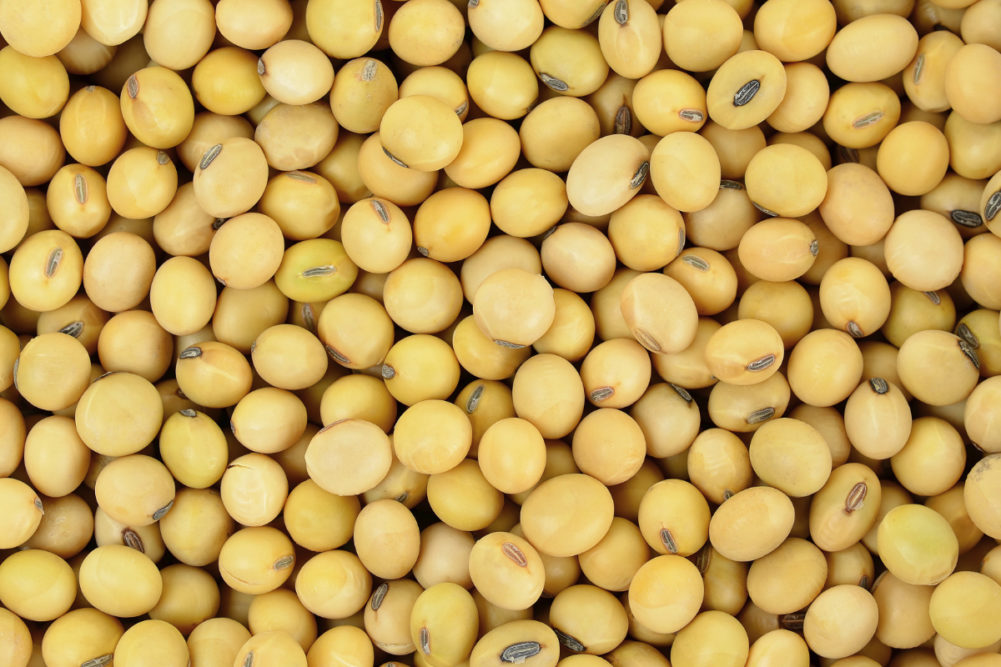LONDON, ENGLAND – There’s been a slight decline in oilseeds prices, alongside a larger drop for soy oil, as harvests pressure the market in the face of slow demand.
The International Grains Council (IGC) in its Oct. 19 Grain Market Report said of the soybean market’s performance over the previous month, that “pulled lower by declines in the US and Brazil, average international values retreated by 2% over the month.”
Chicago soybean spot futures registered a net decline of 1% in a month of sometimes choppy activity as the progressing US harvest and generally weak underlying international demand weighed on sentiment, it said.
“Soft export demand was partly linked to continued late-season competition from Brazilian suppliers, with US dollar firmness a consistent feature,” the IGC said.
The influence of soy product markets was mixed, the London-based international organization explained.
“Despite turning higher more recently, likely in tandem with crude oil, a sharp month-on-month drop in soya oil values pressured, contrasting with gains in soymeal,” the IGC said. “With increasing new crop availabilities weighing on basis levels, Gulf export quotations retreated by 2%, to $512 fob. Highlighting the competitive position of Brazilian exporters, old crop supplies continued to be offered at an atypical discount to the US, export quotations (Paranagua) declining by 4%, to $491 fob.”
Finally on soy, it noted that “in Argentina, Up River values held steady month-on-month, at $521 fob.”
On rapeseed, the IGC reported that “ICE canola futures in Canada retreated by 3% month-on-month on seasonal harvesting pressure, limited export demand and weakness in soya oil. Physical markets also declined, with fob (Vancouver) quotations falling by $25, to $557. In Australia, fob values (Kwinana) fell by $32, to $503.”
The USDA’s Economic Research Service, in its Oil Crops Outlook, published Oct. 12, reported that soybean export prices moved lower this month, especially in the United States where the new crop began to arrive on the market while shipments from a record Brazil crop infringed on the US export season.
“Additional negative pricing pressure was provided by a higher-than-anticipated US quarterly stocks report,” it added. “Argentina prices were little changed on tight supplies, while Brazil prices were down modestly.”
The US experts made the point that “vegetable oil was a particularly strong driver of oilseed prices this month.”
“Palm oil prices fell to a three-month low on seasonally high production and competition from other oils, including sunflowerseed oil, which is currently trading at an unusual discount,” the ERS said. “In the United States, smaller-than-expected August crush volume as well as lower Renewable Fuel Standard credit (RIN) prices moved average soybean oil prices $104 per tonne this month.”
According to the United Nations Food and Agriculture Organization (FAO), the world price of vegetable oil was down by an average 3.9% in September compared with the previous month, the second fall in a row. In its Oct. 6 Food Price Index report, it said the decline was “driven by lower world prices across palm, sunflower, soy and rapeseed oils.”
“International palm oil prices continued to decrease in September, chiefly underpinned by seasonally elevated production in major producing countries in Southeast Asia,” the FAO said. “Meanwhile, world sunflower oil quotations declined markedly, reflecting the harvest pressure of sunflower seed in the Black Sea region amid robust farmer selling activities.
“As for rapeseed oils, international prices declined on lingering abundant global export supplies, while world soy oil prices also followed suit, despite prospects of a firm demand from the biodiesel sector.”
Chris Lyddon is World Grain’s European correspondent. He may be contacted at: [email protected].






